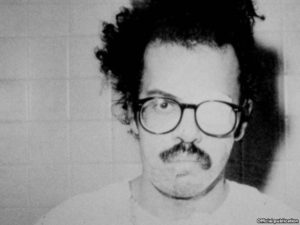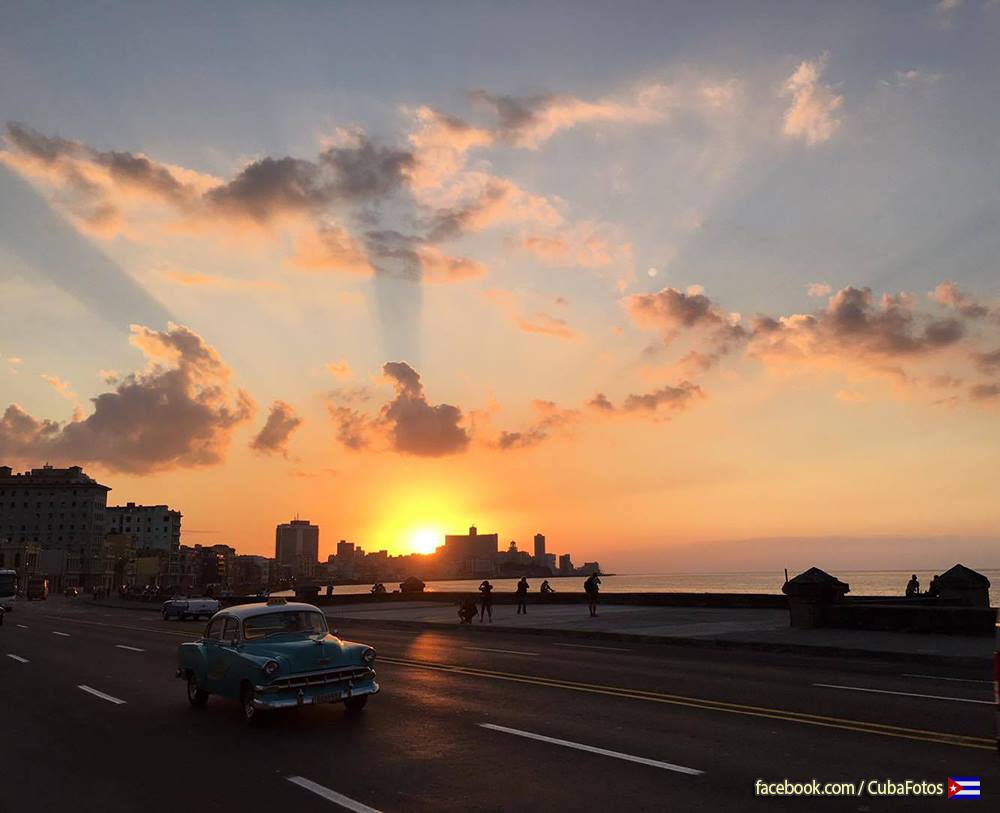HOW ARE THEY LIVING IN CUBA FUGITIVES FROM THE U.S. JUSTICE.
Cuba is home to some 70 American fugitives from justice.
More than three decades after he escaped from a New Jersey jail and fled to Cuba with the promise of political asylum by Fidel Castro, Joanne Chesimard, aka Assata Shakur, she finds herself trapped in a captivity of a completely different species, public NorthJersey.
Theirs is not a prison with walls or guards but Cuba’s capital, where Chesimard, 68, has lived since the 1980’s. Its location is described as a hostage of his own increasing fear – some say that his paranoia is omnipresent – because of renewed diplomatic ties between the regime of Cuba and the United States that could lead to his return to a New Jersey prison cell to finish serving a sentence of life imprisonment for the murder of a State policeman in 1973.
Such is the portrait of one of the terrorists most notorious and mysterious of America – a key figure of the Liberation Army black – who was seen in interviews recent partners in Havana, where he has led a cloistered existence.
Chesimard, who remains a revolutionary icon for many in the ultra-left, among some black activists and Latin hip-hop artists, and between the Communists, is the only woman on the FBI most wanted terrorists list.
According to reports, he fears strangers and he has refused numerous requests for interviews from the media, including The Record. And when you leave your home, those who have been in contact with her say that he wants to know in advance exactly who will meet with her and why. A report says that you travel with security guards from the Cuban Government.
Chesimard lives terrified in Cuba.
According to her friends, she is a virtual captive of his own fear in Cuba, a country that once might have been considered a revolutionary paradise.
Another of the fugitives living in Cuba is William “Willie” Guillermo Morales, who was a member, according to the FBI, the pro-independence armed forces of national liberation (FALN) Puerto Rican, a group that carried out more than 100 attacks with bombs manufactured mostly by him, with pipe segments. The POPs caused several deaths, numerous injuries and millions of dollars in damage.
Morales lost his hands and an eye in 1978 to explode a bomb that was putting together. Sentenced to 89 years in prison, he escaped from a hospital and fled to Mexico, where he was captured in 1983. However, Mexican authorities turned him over to the Cuban.
Morales lives incognito in the island, with a low-profile public. But haunted by his own guilt to be returned to the United States.
Another wanted by the FBI who live in Cuba is Charles Hill, sought in 1971 by the death of a police officer of the State of New Mexico. Speaking to AP Hill said their Cuban contacts recently assured him that there was no risk of being extradited. Hill is a veteran of the war in Viet Nam that he played in “New Afrika”, organization of the 1970s who wanted to create a black nation in the southeastern United States.
He lives virtually hidden from the public and speaks that lives accompanied by Cuban security guards.
Cheri Dalton (alias Nehanda Abiodun), another of the fugitives living in Cuba is being sought by the robbery of armored vehicles carrying money in 1981. In one of those round two policemen and a security guard were killed.
She is accused of having integrated the command which released Shakur and having participated in several robberies. She is a graduate of Columbia University and lives in Cuba since about 1990. She is one of the main driving forces behind the movement of hip hop on the island. It continues to promote a socialist revolution in the United States, according to writings attributed to him.
However, officials of the Cuban regime say that she, and other fugitives from us justice, he will not be a factor in negotiations with the United States. A report says that she travels with security guards from the Cuban Government.
Several leaders of the Black Panthers and other groups who carried out violent acts in the United States, took refuge in Cuba to avoid being arrested as Robert Williams, Eldridge Cleaver, Huey P. Newton and Stokeley Carmichael. By the way, many did not withstand the Castroism and decided to leave the island.
Agencies/Various/Excerpts/Internetphotos/Arnoldo Varona/TheCubanHistory.com
THE CUBAN HISTORY, HOLLYWOOD.
CÓMO VIVEN EN CUBA LOS PRÓFUGOS DE LA JUSTICIA DE EEUU.
Cuba alberga a unos 70 fugitivos estadounidenses de la Justicia.
Más de tres décadas después que escapó de una cárcel de Nueva Jersey y huyó a Cuba con la promesa de asilo político por parte de Fidel Castro, Joanne Chesimard, alias Assata Shakur, se encuentra a sí misma atrapada en una cautividad de una especie totalmente diferente, pública NorthJersey.
La suya no es una cárcel con muros o guardias sino la capital de Cuba, donde Chesimard, de 68 años, ha vivido desde la década de 1980. Su situación es descrita como la de una rehén de su propio miedo cada vez mayor –algunos dicen que su paranoia es omnipresente– debido a los lazos diplomáticos renovados entre el régimen de Cuba y Estados Unidos que podrían conducir a su regreso a una celda de la prisión de Nueva Jersey para terminar cumpliendo una sentencia de cadena perpetua por el asesinato de un policía estatal en 1973.
Tal es el retrato de una de las terroristas más notorias y misteriosas de América –una figura clave del Ejército de Liberación Negro– que fue vista en entrevistas recientes con asociados en La Habana, donde ha llevado una existencia enclaustrada.
Chesimard, quien sigue siendo un icono revolucionario para muchos en la ultraizquierda, entre algunos activistas negros y los artistas de hip-hop latino, y entre los comunistas, es la única mujer en la lista de los terroristas más buscados del FBI.
Según los informes, teme a los extraños y se ha negado a numerosas peticiones de entrevistas de los medios, incluyendo de The Record. Y cuando sale de su casa, los que han estado en contacto con ella dicen que quiere saber de antemano exactamente quién se reunirá con ella y por qué. Un informe dice que viaja con guardias de seguridad del Gobierno cubano.
Chesimard vive aterrada en Cuba.
Según sus amigos, ella es una cautiva virtual de su propio miedo en Cuba, un país que una vez pudo haber considerado un paraíso revolucionario.
Otro de los fugitivos viviendo en Cuba es William “Willie” Guillermo Morales, quien era miembro, según el FBI, de las independentistas Fuerzas Armadas de Liberación Nacional (FALN) puertorriqueñas, un grupo que perpetró más de 100 atentados con bombas manufacturadas en su mayoría por él, con segmentos de tubería. Los estallidos causaron varias muertes, numerosos heridos y millones de dólares en daños.
Morales perdió las manos y un ojo en 1978 al estallar una bomba que estaba confeccionando. Condenado a 89 años de cárcel, logró escapar de un hospital y huyó a México, donde fue capturado en 1983. Sin embargo, las autoridades mexicanas lo entregaron a las de Cuba.
Morales vive de incognito en la isla, con un bajo perfil publico. Pero perseguido por sus propios remordimientos de ser entregado devuelto a los Estados Unidos.
Otro de los buscados por el FBI que viven en Cuba es Charles Hill, buscado en 1971 por la muerte de un policía del estado de New México. En declaraciones a AP Hill dijo que sus contactos cubanos recientemente le aseguraron que no había riesgo de ser extraditado. Hill es un veterano de la guerra de Vietnam que militó en “New Afrika”, organización de la década de los setenta que quería crear una nación negra en el sudeste de Estados Unidos.
Vive prácticamente escondido del público y se habla de que vive acompañado por guardias de seguridad cubana.
Cheri Dalton (alias Nehanda Abiodun), otro de los fugitivos viviendo en Cuba es buscada por el robo de vehículos blindados que transportaba dinero en 1981. En uno de esos asaltos perdieron la vida dos policías y un guardia de seguridad.
A ella se le acusa de haber integrado el comando que liberó a Shakur y de haber participado en varios robos. Es graduada de la Universidad de Columbia y vive en Cuba desde aproximadamente 1990. Es una de las principales impulsoras del movimiento de hip-hop en la Isla. Sigue promoviendo una revolución socialista en Estados Unidos, según escritos que se le atribuyen.
Sin embargo, funcionarios del régimen cubano dicen que ella, y los demás prófugos de la justicia norteamericana, no será un factor en las negociaciones con Estados Unidos. Un informe asegura que viaja con guardias de seguridad del Gobierno cubano.
Varios dirigentes de las Panteras Negras, y de otras agrupaciones que ejecutaron actos violentos en Estados Unidos, se refugiaron en Cuba para evitar ser apresados como Robert Williams, Eldridge Cleaver, Huey P. Newton y Storkeley Carmichael. Por cierto, muchos no soportaron el castrismo y decidieron abandonar la isla.
Agencies/Various/Excerpts/Internetphotos/Arnoldo Varona/TheCubanHistory.com
THE CUBAN HISTORY, HOLLYWOOD.








